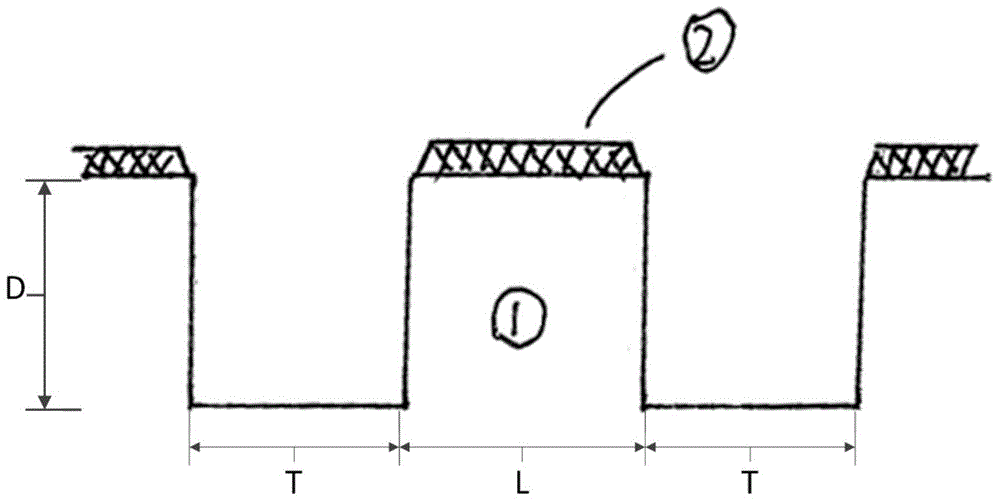Self-alignment method for silicon carbide devices
A self-aligned, silicon carbide technology, used in semiconductor devices, semiconductor/solid-state device manufacturing, electrical components, etc., can solve problems such as poor contact, unguaranteed dry etching uniformity, etc., to meet the requirements of reducing uniformity, Avoid the effect of poor contact between the metal electrode and the channel
- Summary
- Abstract
- Description
- Claims
- Application Information
AI Technical Summary
Problems solved by technology
Method used
Image
Examples
Embodiment 1
[0046] The self-alignment method for silicon carbide devices provided in this embodiment includes the following steps:
[0047] S1: Prepare exposed channels 1 and grooves on the wafer, as shown in FIG. 4(a);
[0048] S2: Deposit a layer of first dielectric layer 3 on the bottom and side walls of the trench and on the surface of channel 1, and the material of the first dielectric layer 3 contains endpoint detection indicator elements for dry etching, as shown in Figure 4(b) shown; for example, the material of the first dielectric layer 3 is silicon nitride, which contains nitrogen, and the material of the channel 1 and the second dielectric layer 4 does not contain nitrogen, so the material of the first dielectric layer 3 contains Nitrogen is used as an indicator element for endpoint detection of dry etching;
[0049] S3: Deposit a second dielectric layer 4 on the surface of the first dielectric layer 3 to cover the bottom and side walls of the trench and the surface of the ch...
Embodiment 2
[0054] The self-alignment method for silicon carbide devices provided in this embodiment includes the following steps:
[0055] S1: Prepare exposed channels 1 and grooves on the wafer, as shown in FIG. 4(a);
[0056] S2: Deposit a layer of first dielectric layer 3 on the bottom and side walls of the trench and on the surface of channel 1, and the material of the first dielectric layer 3 contains endpoint detection indicator elements for dry etching, as shown in Figure 4(b) shown; for example, the material of the first dielectric layer 3 is silicon nitride, which contains nitrogen, and the material of the channel 1 and the second dielectric layer 4 does not contain nitrogen, so the material of the first dielectric layer 3 contains Nitrogen is used as an indicator element for endpoint detection of dry etching;
[0057] S3: Deposit a second dielectric layer 4 on the surface of the first dielectric layer 3 to cover the bottom and side walls of the trench and the surface of the chan...
PUM
 Login to View More
Login to View More Abstract
Description
Claims
Application Information
 Login to View More
Login to View More - R&D
- Intellectual Property
- Life Sciences
- Materials
- Tech Scout
- Unparalleled Data Quality
- Higher Quality Content
- 60% Fewer Hallucinations
Browse by: Latest US Patents, China's latest patents, Technical Efficacy Thesaurus, Application Domain, Technology Topic, Popular Technical Reports.
© 2025 PatSnap. All rights reserved.Legal|Privacy policy|Modern Slavery Act Transparency Statement|Sitemap|About US| Contact US: help@patsnap.com



